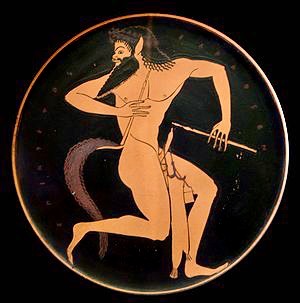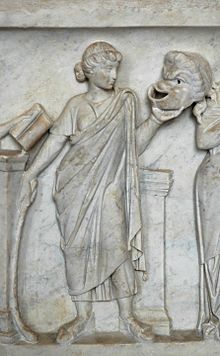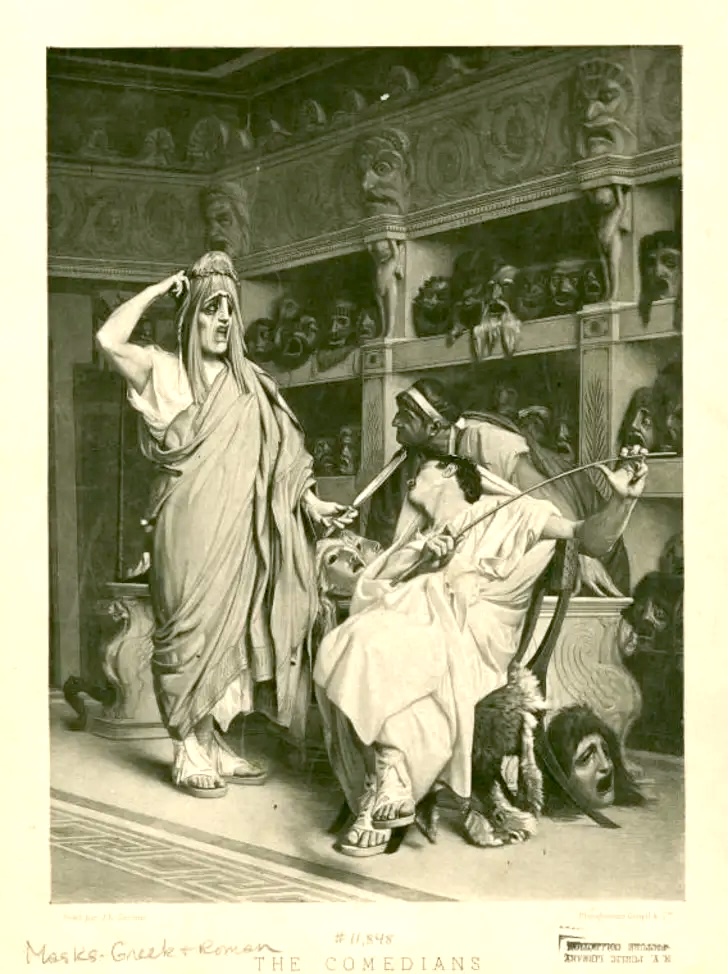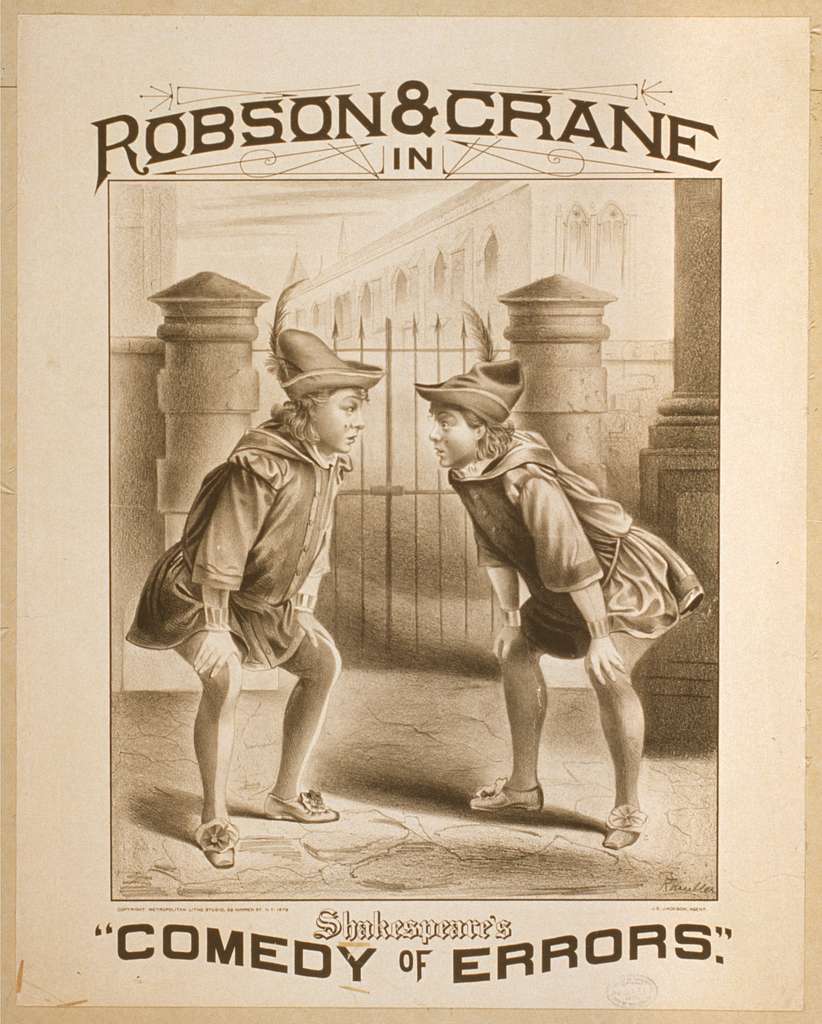The above picture depicts the satyr, an Ancient Greek mythical character who lent his name to the Greek theater “satyr play” and the word “satire.” The play often starred the satyr, a male spirit with ears and tail of a horse sporting a permanent erection. These plays were filled with mock drunkenness, brazen sexuality, pranks, phallic props, sight gags and overall merriment. This satyr picture serves as a warning about this article: Most of these ancient jokes herein are rude, crude, sexual in nature; and misogynistic. If you are okay with that, read on.
Article originally posted May 6, 2019; updated November 8, 2021
The world’s oldest jokes are cuneiform writings in the Arkaddian language used in the Mesopotamian Empire (2900 B.C.E. to 300 C.E.). The Sumerians are the people of this empire, so Mesopotamia and Sumeria are the same thing. At the end of this blog is a map of ancient Mesopotamia (think Iraq and surrounding area); and an example of Arkkadian cuneiform writing.
The Oldest Joke Ever Recorded – Sumeria circa 1900 B.C.E.

Above is a Sumerian (Iraqi) chiseled stone tablet that dates to around 1900 BC. This crudely chiselled example of ancient writing contains a crude joke. The meaning of this bon mot is, frankly, lost on us 4,000 years later. It is obviously a joke but we don’t it. This joke was originally posted as a mystery, but it was explained by Professor Ross Gandy, a Professor at Mexico’s premier University UNAM. Professor Gandy has lived and worked near Mexico City for many decades.
“Something which has never occurred since time immemorial – a young woman did not fart on her husband’s lap.”
Professor Ross explained this joke. As part of the marriage ritual in Sumeria, the newly minted husband performed anal sex on his new bride. Afterward, the newlywed wife sat on her husband’s lap She farted to show her satisfaction and as a thank you to her new husband. If the wife did not fart, that signaled that the couple needed some additional type of sexual activity. The wife almost always farted which ended sex for the evening. However, that was not in the case for the woman in this joke. In case you are wondering, the second half of the sexual performance is fellatio. I warned you.
There are many other Sumerian jokes from around that time period. One such cryptic joke refers to alcohol. Question: “In your mouth and your teeth, constantly stared at you, the measuring vessel of your lord. -What is it? Answer: Beer.” And while I this joke not be that funny to you, the researchers note that “your teeth” could also be interpreted as “your urine.” Does that help?
My personal favorite Sumerian joke from this same 1,900 B.C.E. tablet above. Question: The deflowered girl did not become pregnant. The undeflowered girl (virgin) became pregnant. What is it? Answer: Auxiliary military forces. Explanation: The auxiliary forces in the Sumerian army were known to be weak, cowardly and ran away from battle. The soldiers lied and were not to be trusted; just like the “undeflowered girl.”
Moving forward in time, this joke was found in the Ancient Egyptian story book known as the Westcar Papyrus from 1,600 B.C.E.:
Question: “How do you entertain a bored pharaoh? Answer: “You sail a boatload of young women dressed only in fishing nets down the Nile and urge the pharaoh to go catch a fish.”
The jokes are in chronological order. Now, Back to Ancient Sumeria. This brain teaser from 1,200 B.C.E. is both funny and thought provoking:
“Three ox drivers from Adab were thirsty: one owned the ox, the other owned the cow and the other owned the wagon’s load.”
“All three of them wanted to go and fetch water. Yet, the owner of the ox claimed that he could not to leave to get water as he feared his ox would be eaten by a lion. The owner of the cow stated that refused because he thought his cow might wander off into the desert. The owner of the wagon refused alleging that his load would be stolen by some thief. So they agreed to all go together to fetch water.
“In their absence the ox made love to the cow which gave birth to a calf which ate the wagon’s load.”
“Problem: Who owns the calf?”
Jokes sharpened up their humor as time marched on. There is an Ancient Roman joke book, entitled “Philogelos” (‘Laughter Lover’), described by historian Mary Beard as “a collection of wisecracks probably compiled in the fourth or fifth century AD…” This compendium contains some 260 short gags. The common butt of many of these jokes is the “scholastikos” — a supposedly learned man who lacks common sense or is clueless about everyday life.” Below are a few jokes from the Philogelos:
“Doctor,” says the patient, “whenever I get up from my sleep, for half an hour I feel dizzy, and then I’m all right.” And the doctor says, “Get up half an hour later, then.”
The king getting a hair cut set the tone for the event: “Asked by the court barber how he wanted his hair cut, the king replied: “In silence”
The most famous Ancient Roman joke, however, could be an ancestor of Monty Python’s famous “Parrot Sketch.” This Roman wisecrack goes: “That slave you sold me died,” a man complained to a scholastikos. ‘Goodness me,’ the scholastikos replied, “He never did that when I owned him.”
[Note: The Monty Python parrot sketch can be found here:]
Fast forward to more modern times — around 1200 C.E. The oldest joke known to the British Isles is ribald, but accessible (ribald = mildly vulgar sexual joke – Boy, “ribald” is a word I rarely get to use). And the thousand year old English rib-tickler goes like this:
“What hangs at a man’s thigh and wants to poke the hole that it’s often poked before? Answer: A key.”

Bonus Pictures: Three art depictions of comedy; one statue from Ancient Rome; the other from modern era, and the third from the Comedy of Errors promo from 1879:
Below: Map of Ancient Mesopotamia & examples of the Arkkadian language

Cuneiform writing is wedge shaped characters impressed in wet clay and used for permanent storage of records. First used for commercial applications by merchants and the royal palace, but only for invoices and record keeping. Cuneiform was used in only a few ancient civilizations, such as Mesopotamia (Iraq) and Persia (Iran)
The wedge shaped characters of cuneiform writing:
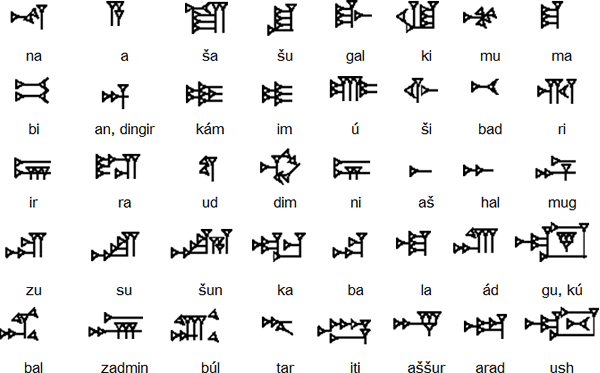
Examples of Arkkadian cuneiform writing
